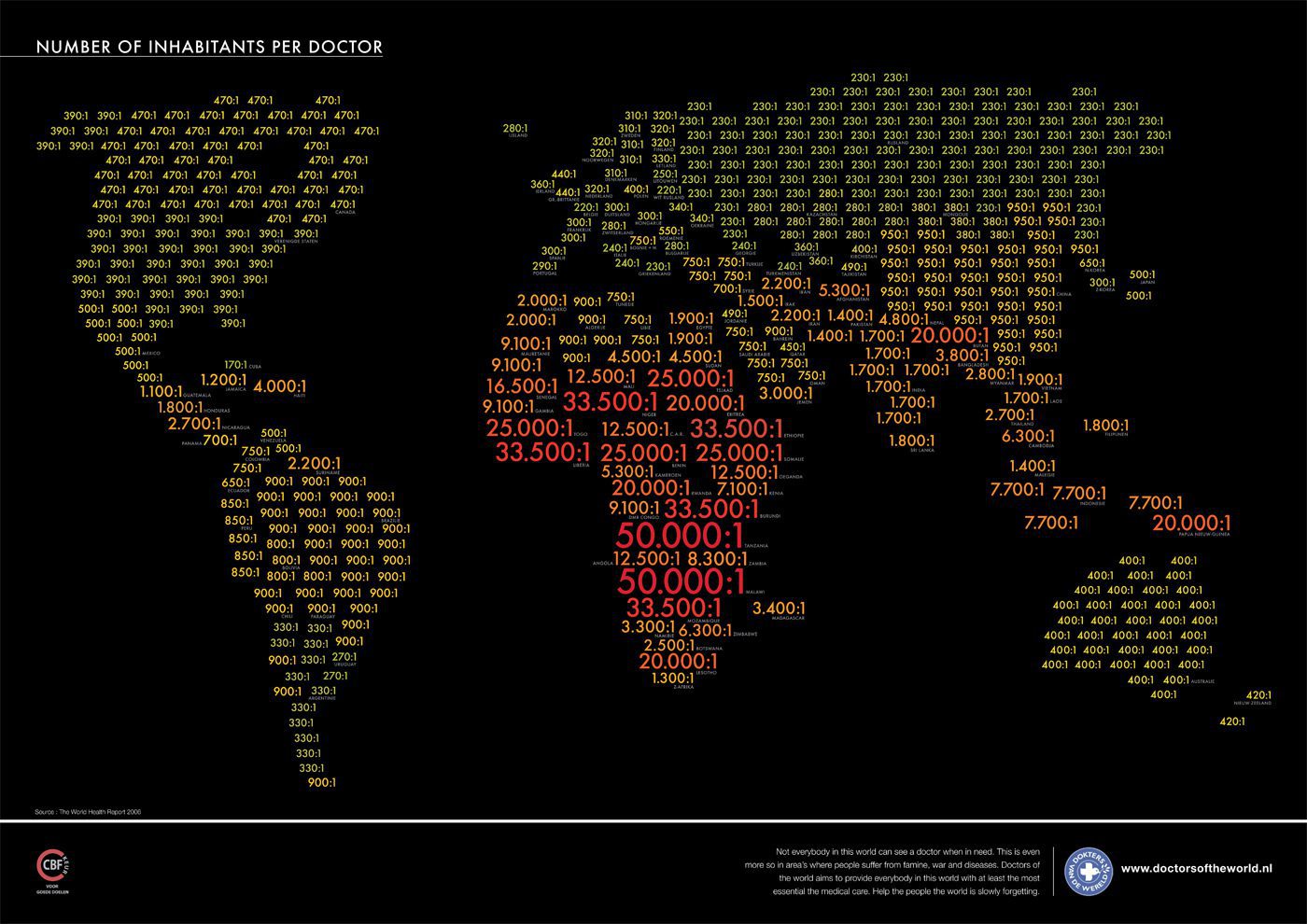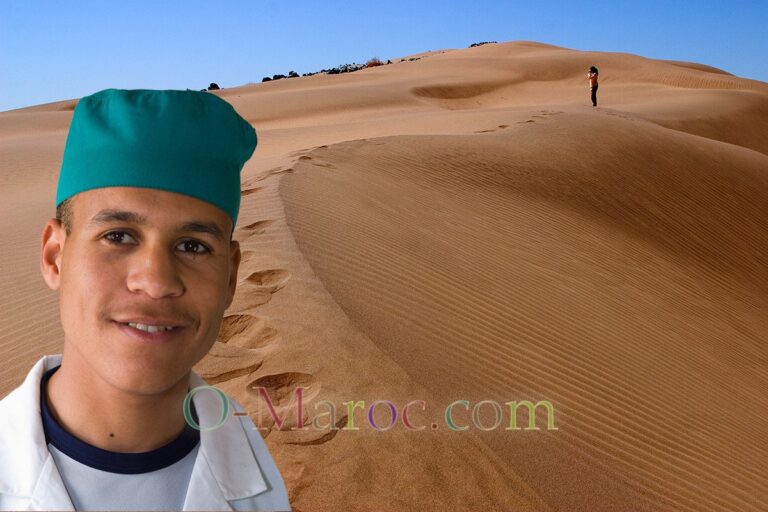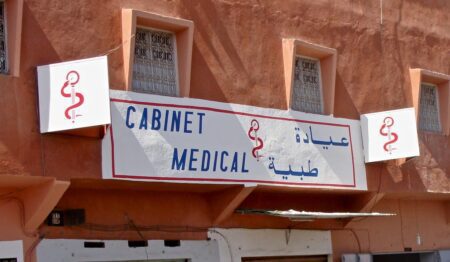One doctor for every 2,000 inhabitants… that’s the average figure for the whole of Morocco, as shown on this map I found on “Une carte du Monde”. If you go back to the source, you’ll see that this is a poster that was produced for “Médecins du Monde” (Doctors of the World) in Holland, to be hung in doctors’ waiting rooms and encourage their patients to be generous and realise their privileges.

2007 seemed a long time ago to me, so I found slightly more recent statistics (2009 for Morocco), and preferred to compare them with France.
As the figures on the map are difficult to read, here are the most interesting ones:
- Northern Morocco: one doctor for every 2,000 inhabitants
- Southern Morocco: one doctor for every 9,000 inhabitants
- Mauritania: one doctor for every 9,000 inhabitants
- Algeria: one doctor for every 900 inhabitants
- Tunisia: one doctor for every 750 inhabitants
- France: one doctor for every 280 inhabitants
- Netherlands: one doctor per 350 inhabitants
First observation: when it comes to the number of doctors per inhabitant, Morocco is clearly lagging behind, with over 50% fewer doctors than its neighbours.
Hachouma!
So here’s a quick comparison. In addition to the Maghreb countries, I’ve added South Africa, an African country with a high standard of living (the figures come from this site).
| Country | No. of doctors/1000 hab | Health expenditure / hab | Health expenditure / GDP |
| France | 3.06 | 4,691 $ | 3.5% |
| Germany | 4.08 | 4,668 $ | 12.1% |
| Netherlands | 2.92 | 5,593 $ | 9.5% |
| Maroc | 0.6 | 148 $ | 5.5% |
| Algeria | 1.2 | 178 $ | 5.8% |
| Tunisia | 1.19 | 238 $ | 1.2% |
| South Africa | 0.77 | 649 $ | 8.2% |
The medical situation in Morocco is clearly worse than that of its neighbours. Average expenditure per inhabitant is much lower, as is the number of doctors. And if the proportion of GDP remains relatively high, that’s only because there are far more Moroccans than there are neighbours.
Major cities and the rest of the country
What is most worrying is the huge disparity between the country’s few major economic and tourist centres (the capital, of course, Casablanca, Agadir and, to a lesser extent, Marrakesh, Fez and Tangier) and the rest of the country. Even in Khenitra, even in Ouarzazate, even in Essaouira, we are already in a kind of medical desert, which becomes emptier the further south we go (or the further north, in the case of the Rif).
So, in the event of a medical emergency requiring hospitalisation, the people of Rissani have to travel at least six or seven hours, and a whole day if they need a specialist who can only be found in Marrakesh (and, below Tichka, there are no residential ophthalmologists or cardiologists).
The dereliction of the public health system
Under-equipped hospitals, far too few staff, corruption, waiting lists, absenteeism… this is the sad reality of public hospitals in Morocco. The countryside is almost better off, with a policy of dispensaries and residential nurses, who are effective in the areas where they can act.
As for the private sector, it only works well for wealthy Moroccans. How many poor Moroccans, who put all their savings into an operation, are treated badly, with delay or indifference, simply because they cannot easily pay?
Beyond the figures, this map unfortunately reflects a reality that the various governments have failed to correct.
Little improvement in ten years
The new health framework law sets a target of 24 doctors per 10,000 inhabitants by 2025.
Admittedly, in “percentage” terms, going from 6 to 24 doctors per 10,000 inhabitants is enormous, but in practice it remains an extremely low figure.
Especially when these doctors are concentrated in a few well-supplied areas and large towns.
 A typo or syntax error? You can select the text and hit Ctrl+Enter to send us a message. Thank you! If this post interested you, maybe you can also leave a comment. We'd love to exchange with you !
A typo or syntax error? You can select the text and hit Ctrl+Enter to send us a message. Thank you! If this post interested you, maybe you can also leave a comment. We'd love to exchange with you !




